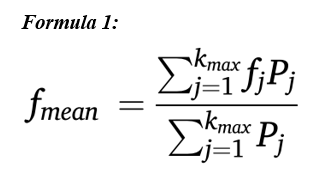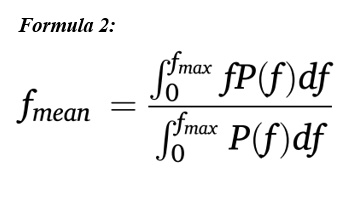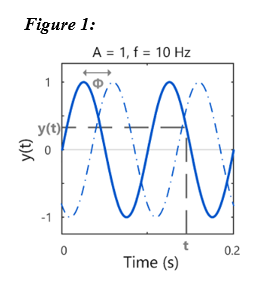Glossary
The inverse value of the interspike interval between two successive action potentials discharged by a single motor unit. Typically measured in discharges per second, pulses per second (PPS) or Hertz (Hz), see Mean Firing Rate.
(McManus et al., 2021)It is the technical term for the composite EMG signal that results from the summation of action potentials from multiple motor units firing asynchronously.
(Campanini et al., 2022)The time between two successive action potentials discharged by a motor unit. Typically measured in units of seconds or milliseconds.
(McManus et al., 2021)A contraction in which a muscle exerts a force with no overall change in muscle–tendon length and no detected change in joint or limb position. At the beginning of a muscle contraction, muscles can shorten substantially and tendons can lengthen with no change in joint or limb position (quasi-isometric).
(McManus et al., 2021)A contraction in which the muscle tension remains constant.The term “isotonic” implies constant tension, however, in practice, constant muscle tension is rarely maintained. The term “isotonic” is often used to refer to a constant torque contraction under conditions that can isometric, concentric (muscle shortens) or eccentric (muscle lengthens) and for which the velocity of the movement can vary. This type of contraction is often performed using isokinetic dynamometers, which measure the torque a subject produces at a single joint.
(McManus et al., 2021)Contraction force measured at the greatest level of muscle activation that can be elicited under voluntary conditions (maximal voluntary effort).The EMG signal is often normalized with respect to the EMG recorded at MVC. Some individuals may not be able to fully activate a muscle during MVC and additional muscle force can be generated through electrical stimulation of the motor nerve supplying the muscle (twitch interpolation).
(McManus et al., 2021)The average number of action potentials discharged per second by a single motor unit.Typically measured in discharges per second, pulses per second (PPS) or Hertz (Hz). Hertz is a unit that measures the number of cycles per second of a periodic, sinusoidal waveform and is thus not strictly applicable to the measurement of aperiodic motor unit firing.
(McManus et al., 2021)Defines the centroid or barycenter of the power spectrum of the signal that is the frequency around which the frequency components of the spectrum are grouped. Mathematically defined as the normalised, one-sided, first-order spectral moment of the EMG power spectral density. The mean frequency (or mean power frequency), fmean, is defined in Formula 1. Pj is the power of the jth frequency component of the EMG power spectrum and kmax is the index of the highest frequency component present in the signal (the highest frequency is usually taken as half of the sampling frequency). Related terms: Median spectral frequency, power spectrum, Fourier transform, frequency. MNF is usually higher than the median spectral frequency because of the skewed shape of the EMG power spectrum. The equation for fmean can also be expressed in continuous time as in Formula 2. Fmax is the highest frequency component present in the signal.
(McManus et al., 2021)

The frequency which divides the EMG power spectrum into two regions, each containing half of the total power within the signal epoch. It is also defined as the 50th percentile of the power spectrum, which means that the frequency components below it contain 50% of the total power and those above it contain 50% of the total power. The median frequency, fmed, is defined as in Formula 1. Pj is the power of the jth frequency component of the EMG power spectrum, kfmed is the index of the median frequency and kmax is the index of the highest frequency component present in the signal (the highest frequency is usually half of the sampling frequency). Note that fmed = Δf·kfmed, where Δf is the frequency resolution. Related terms: Mean spectral frequency, power spectrum, Fourier transform, frequency. MDF and mean spectral frequency have similar properties. The equation for fmed can also be expressed in continuous time, as shown in Formula 2. Fmax is the highest frequency component present in the signal. The value fmax is often replaced by half of the sampling frequency (fs/2) since P(f) = 0 at frequencies greater than fmax.
(McManus et al., 2021)


Unwanted voltage fluctuations present in the EMG signal due to movement between the electrode and tissue or the movement of cables connected to the recording electrodes. Motion artefact at the electrode-tissue interface encompasses both movement of the electrode and the underlying skin and deformation or stretching of the skin underneath the electrode. It can be reduced by careful skin preparation and secure placement of the electrodes. Most of the power in EMG signals occurring due to motion artefact will lie below 20 Hz and can be attenuated by high-pass filtering the signal.
(McManus et al., 2021)We value your feedback
Let us know how helpful you found the recommendations above and how we can improve: